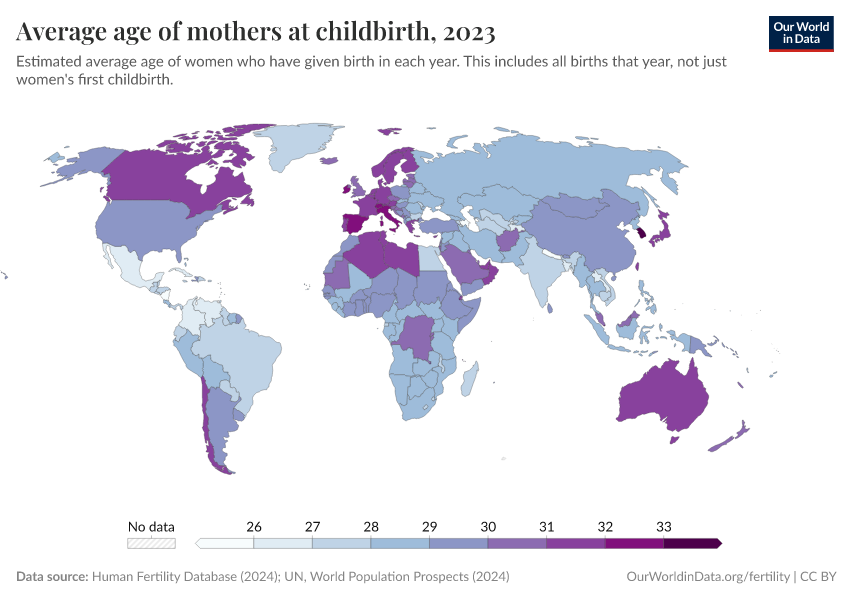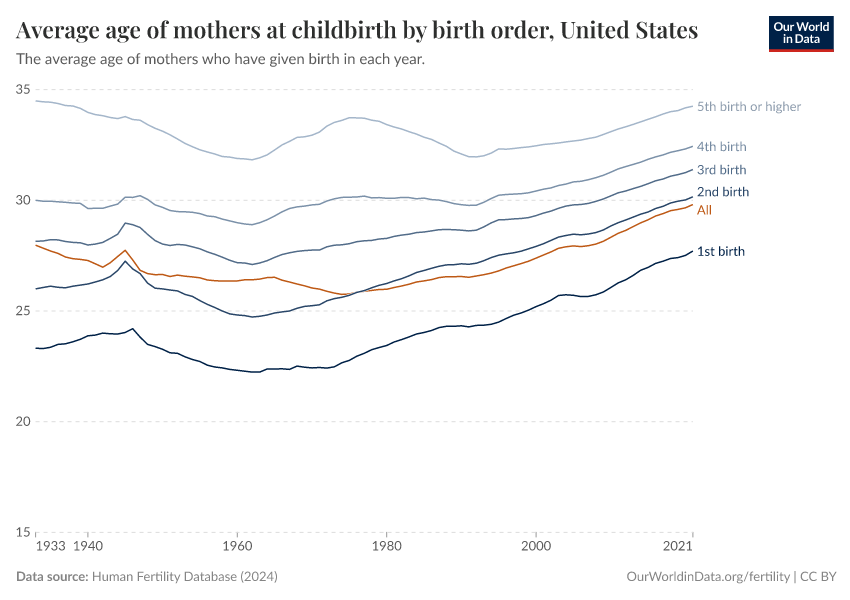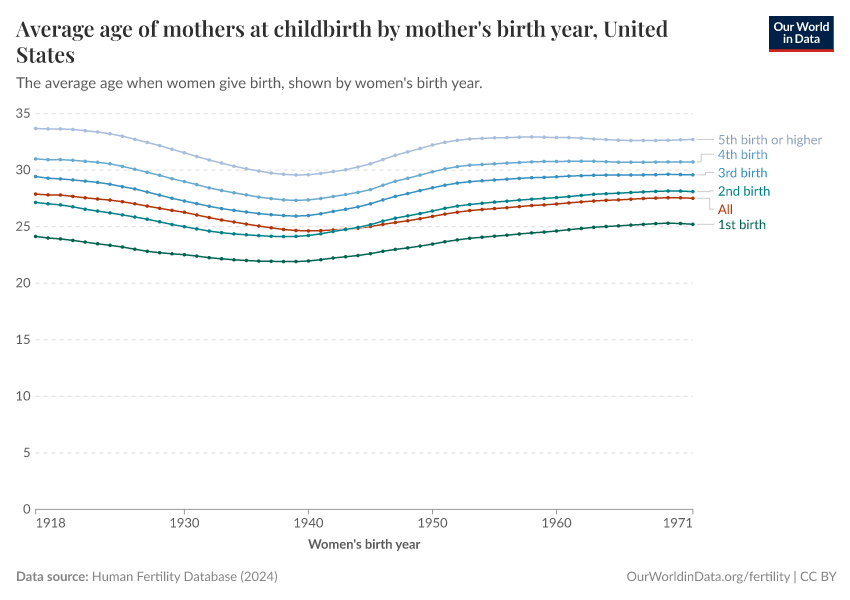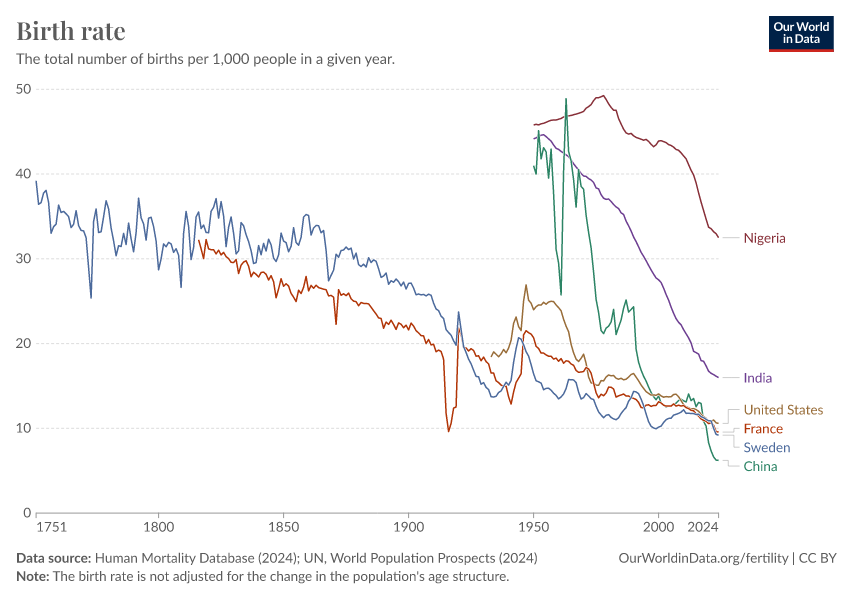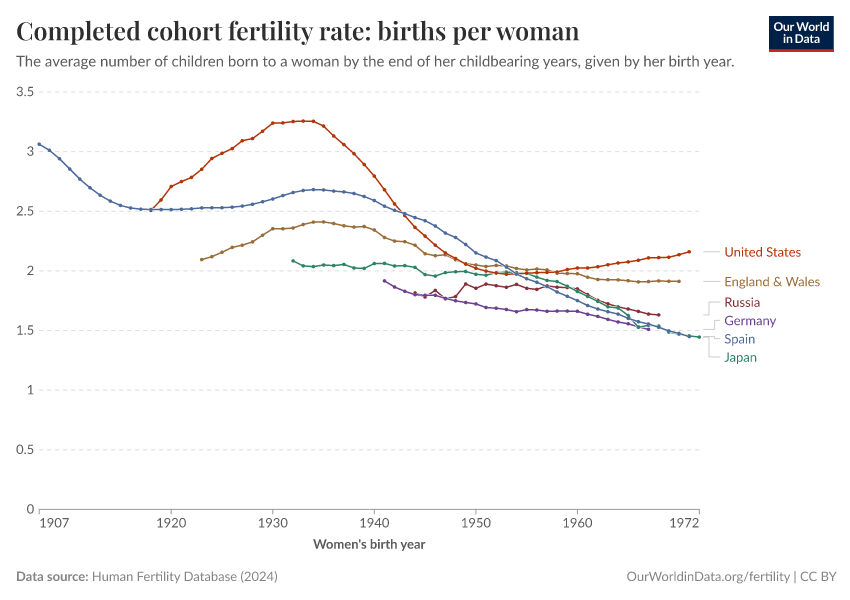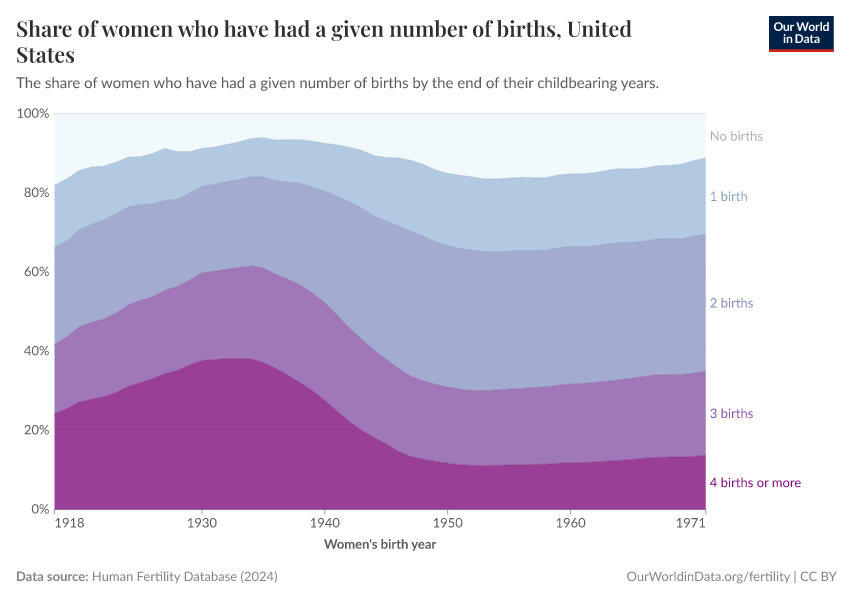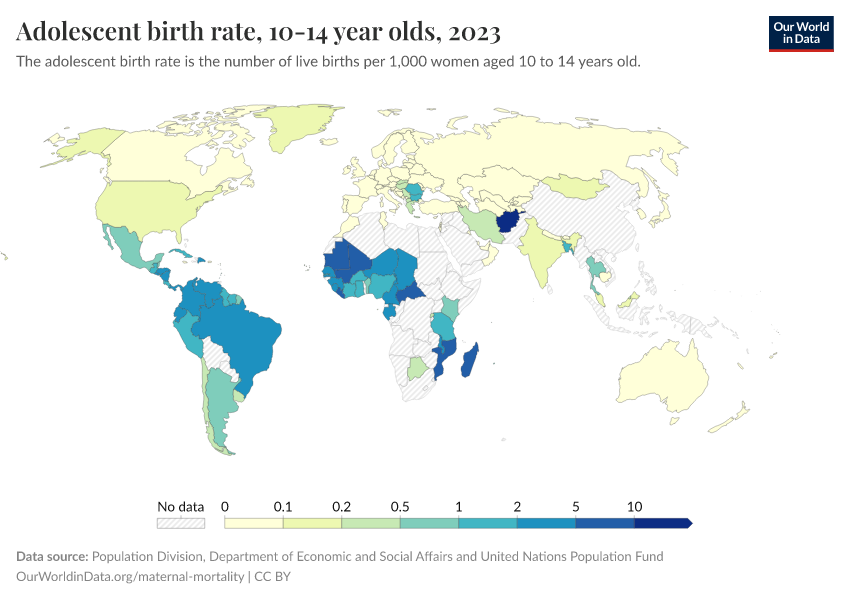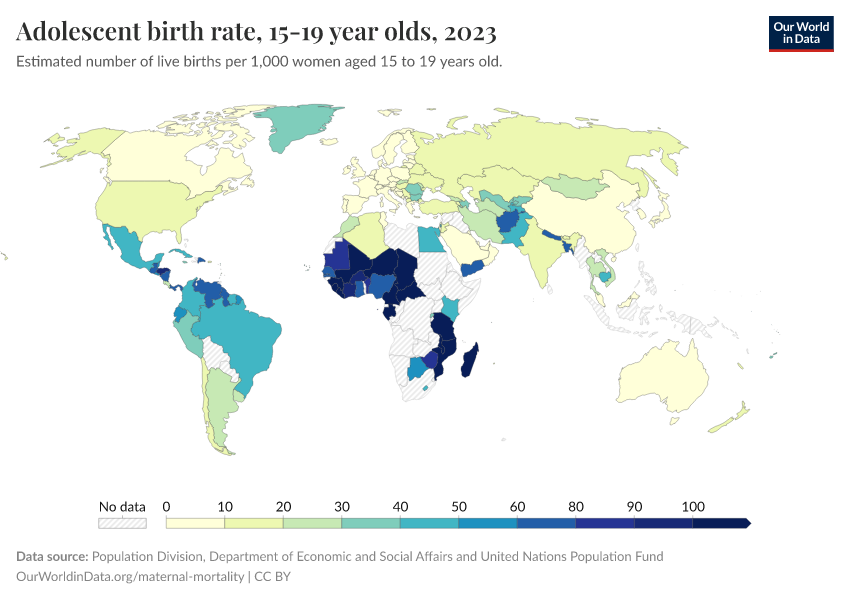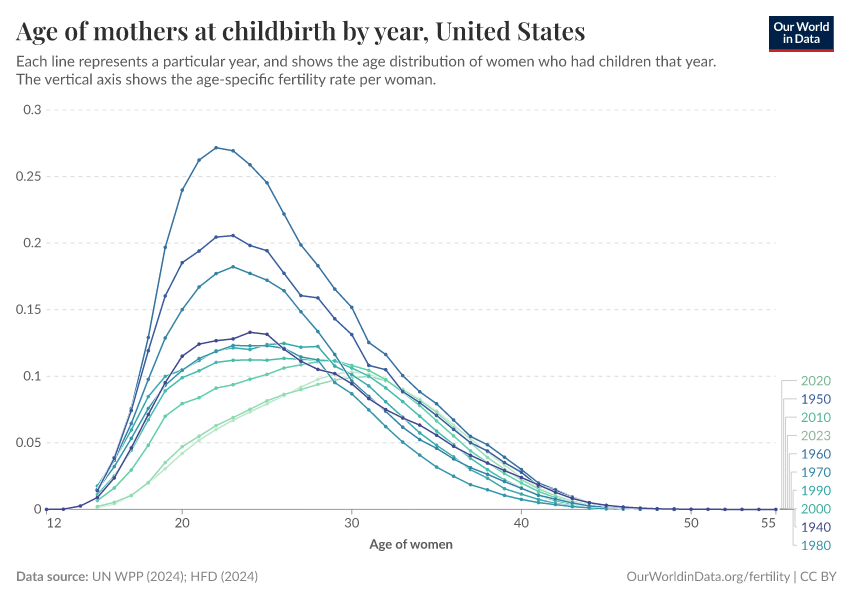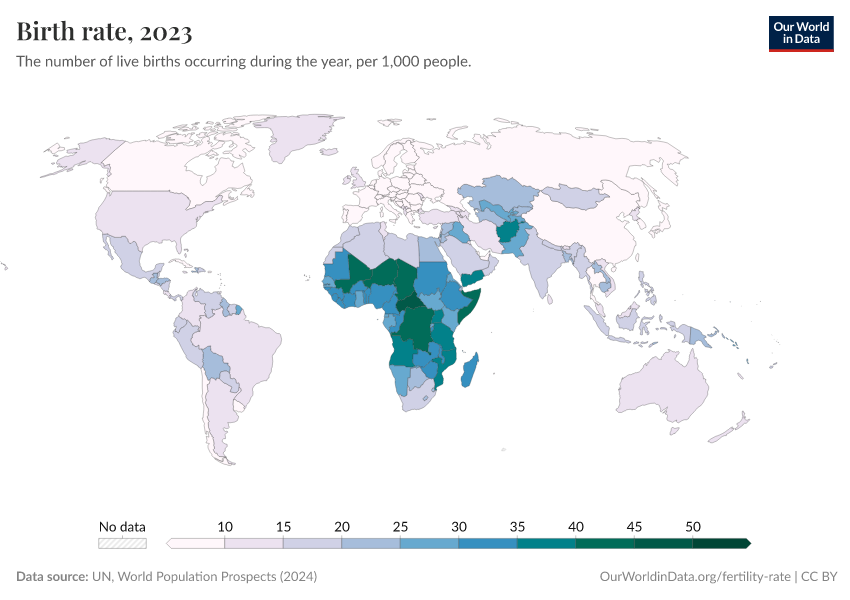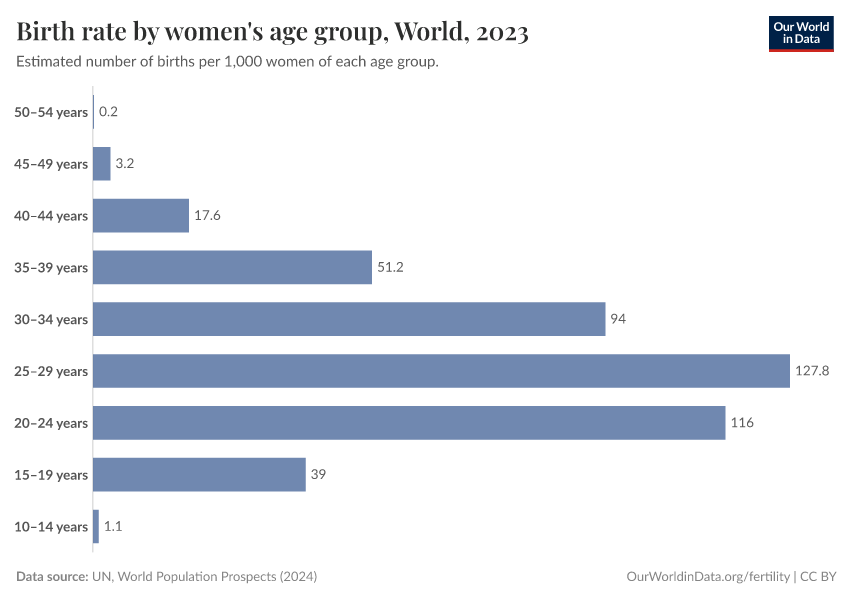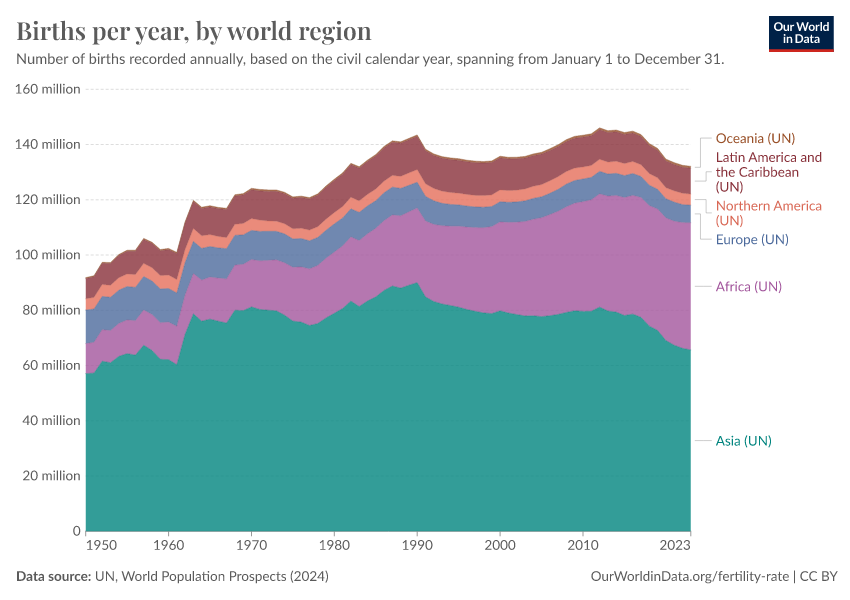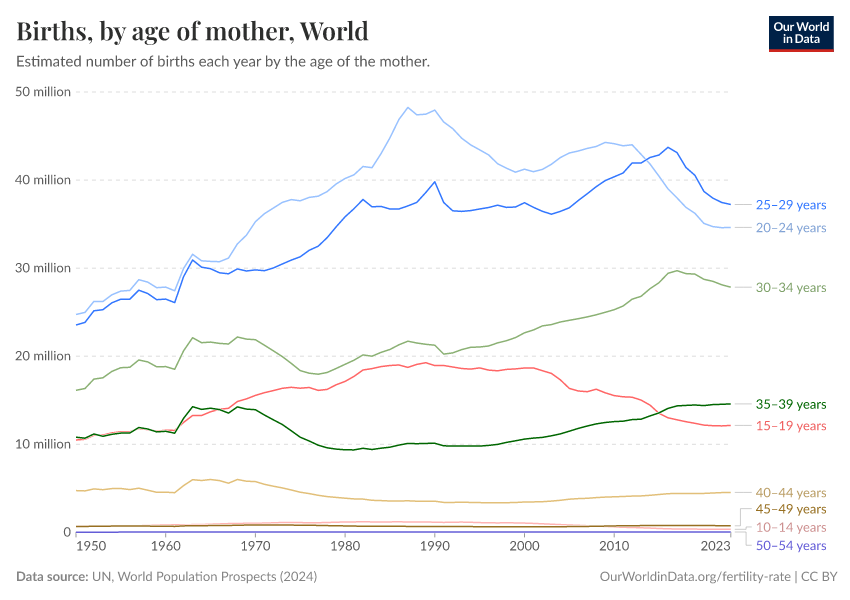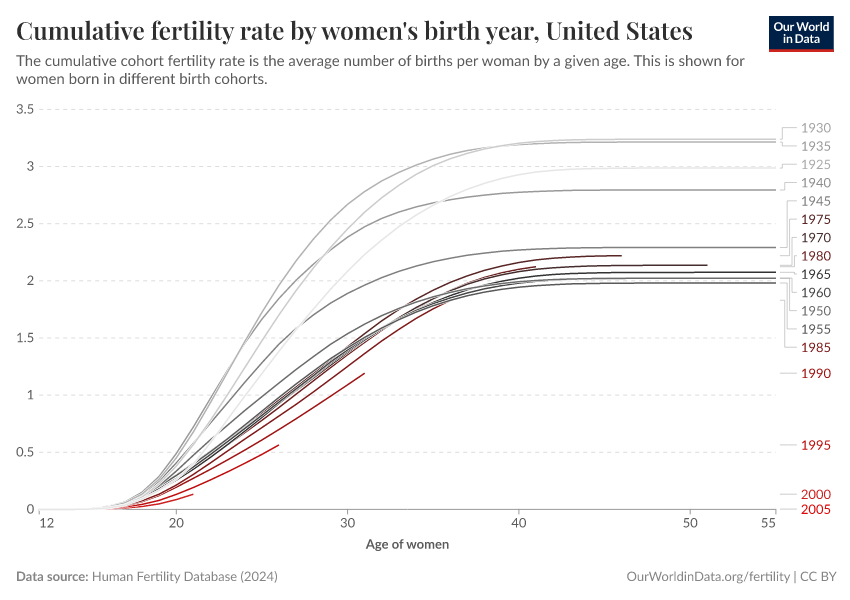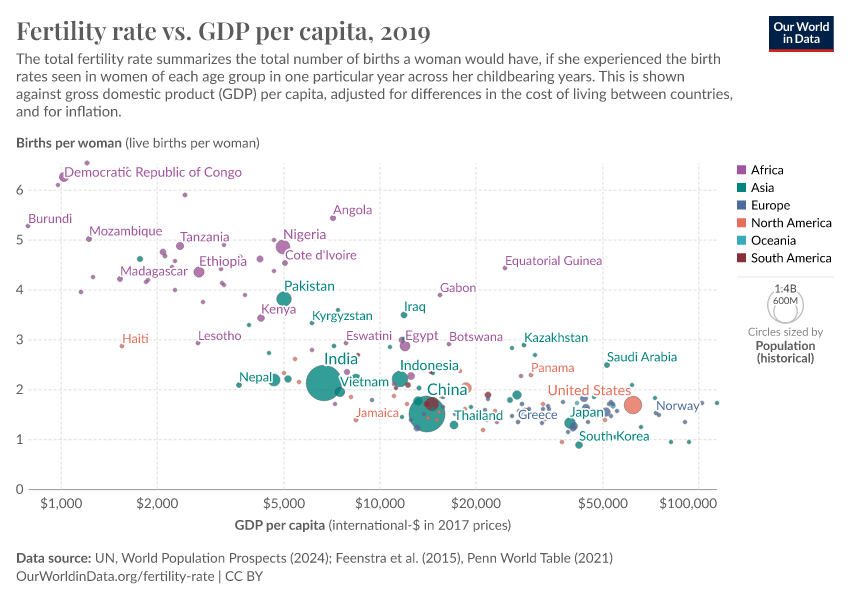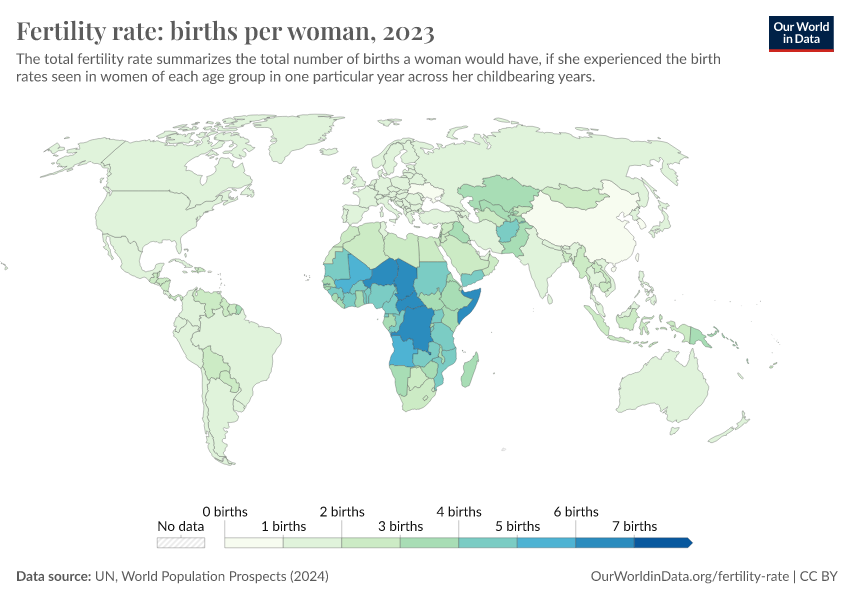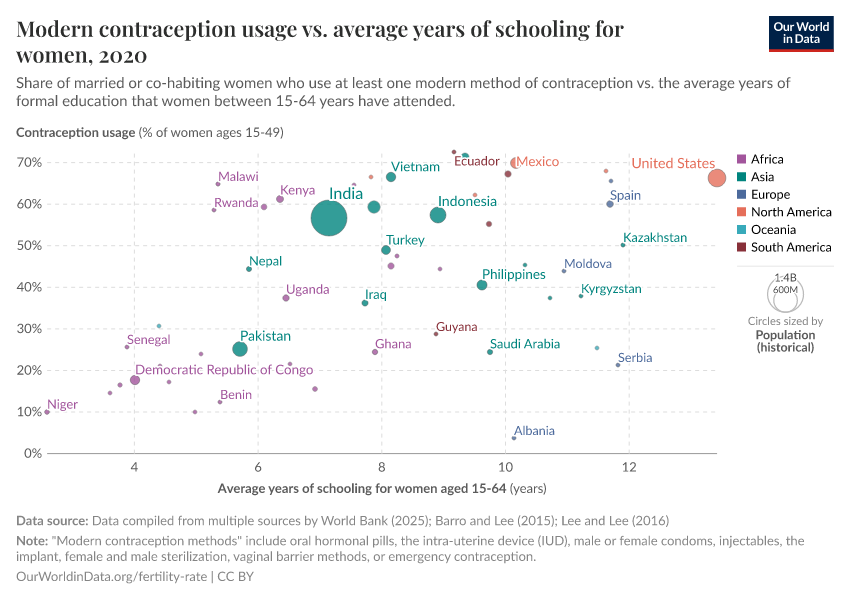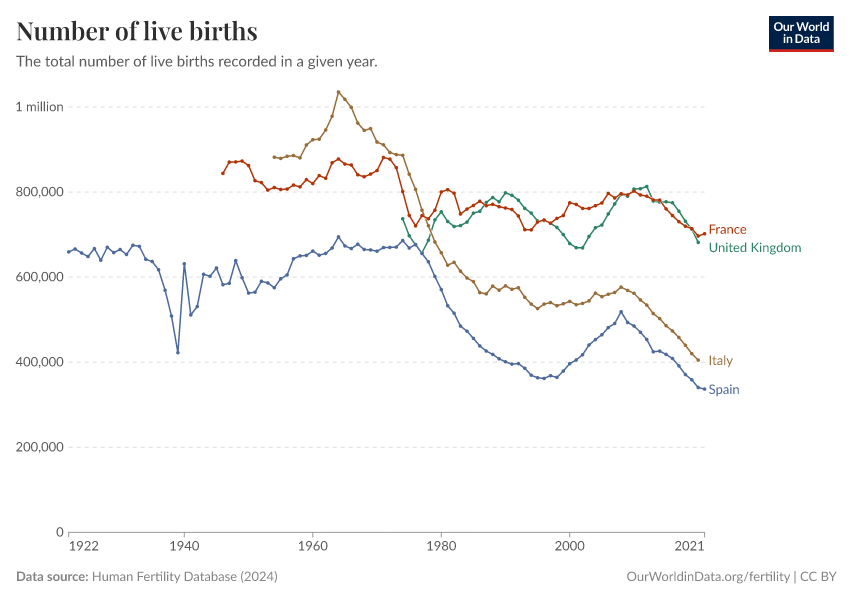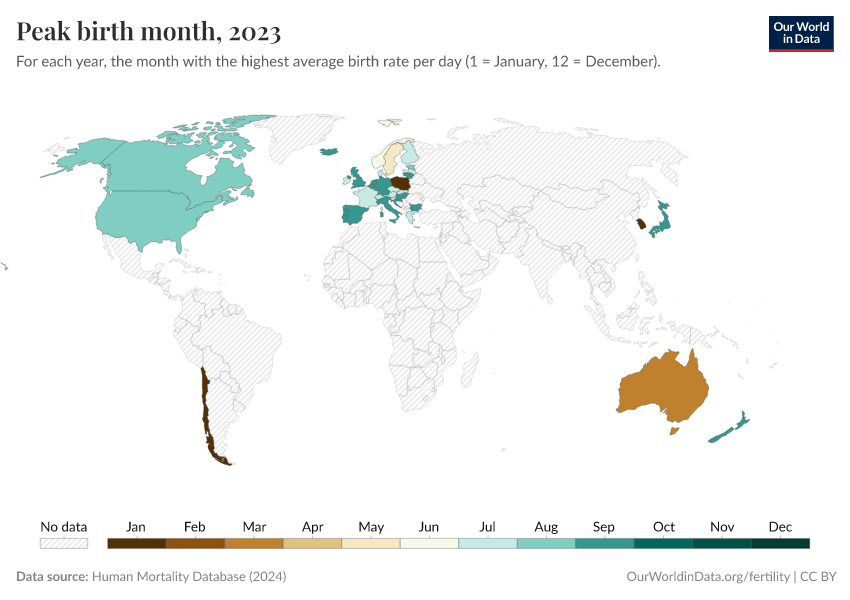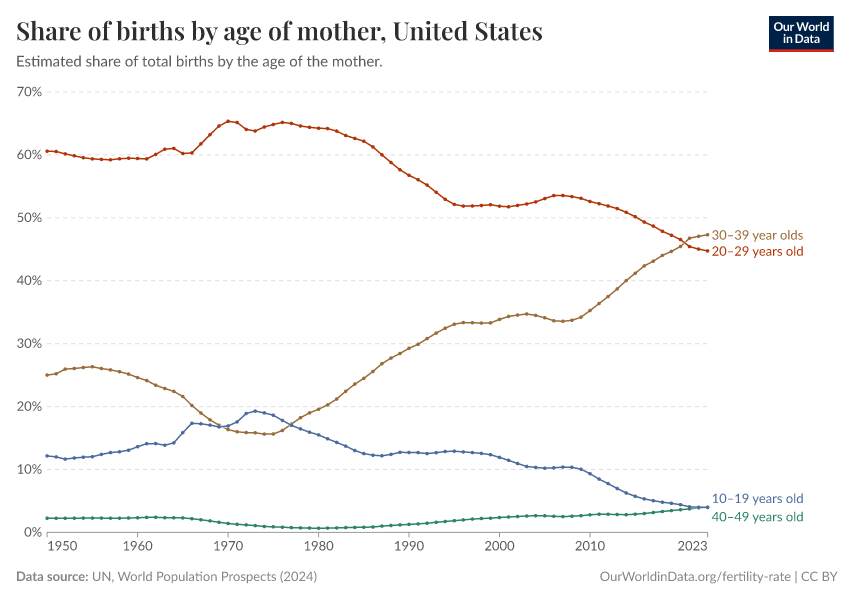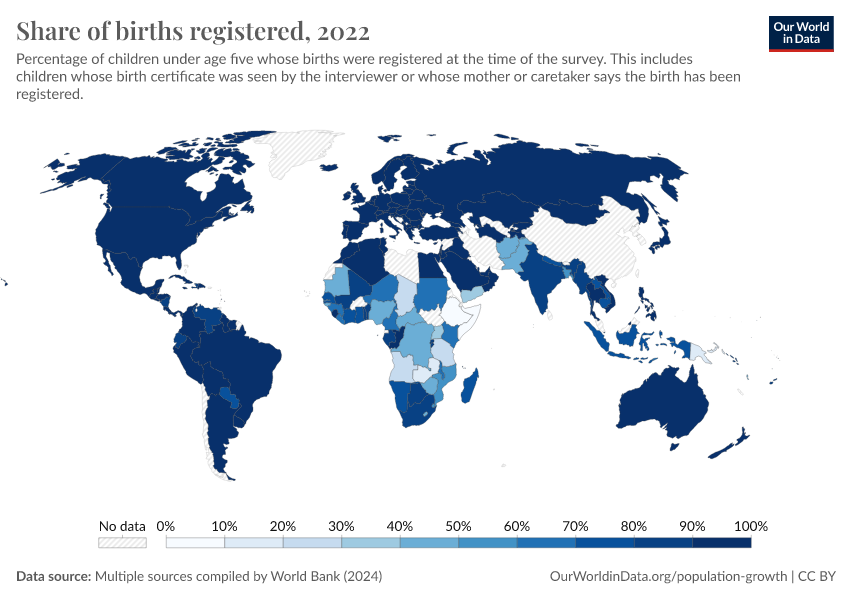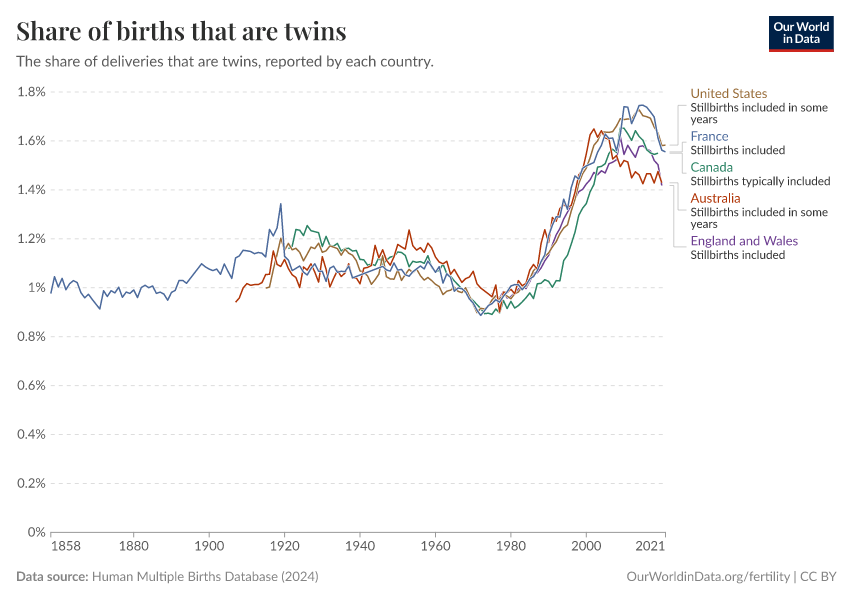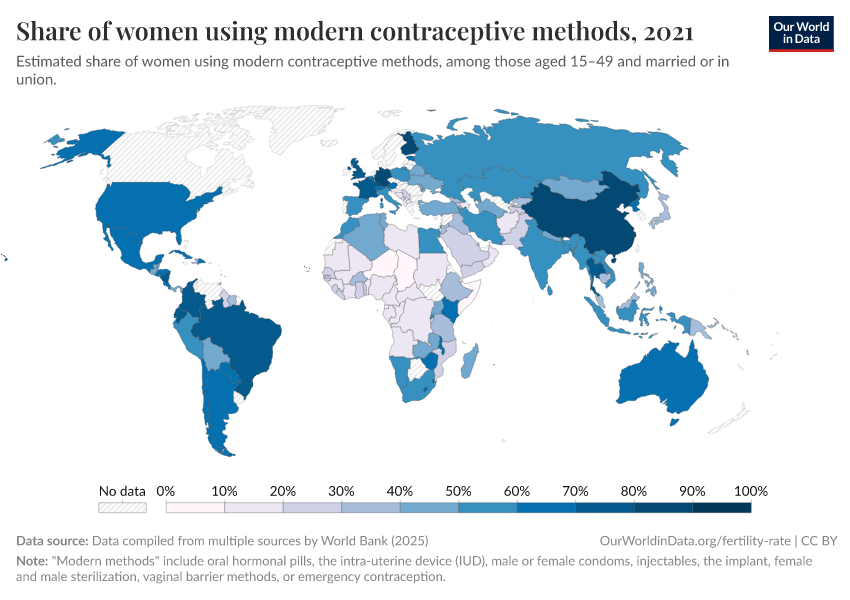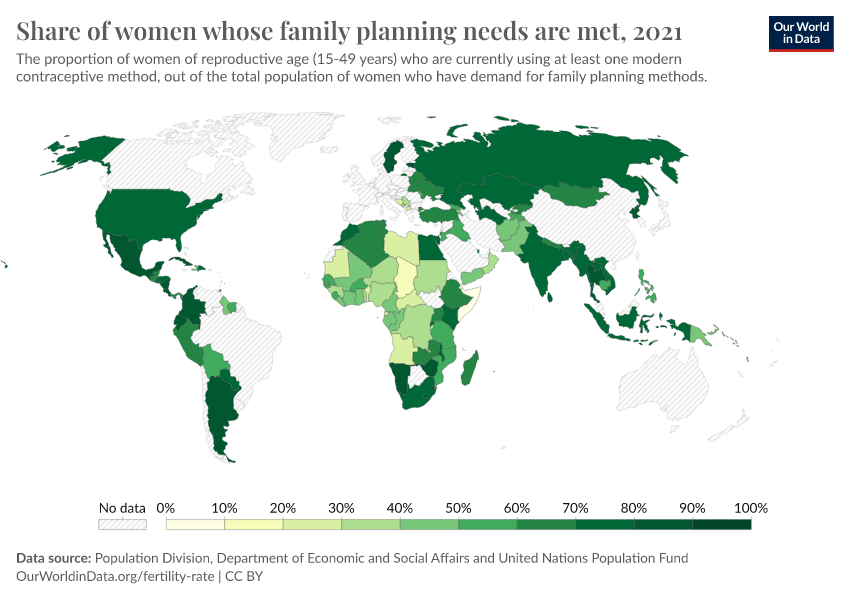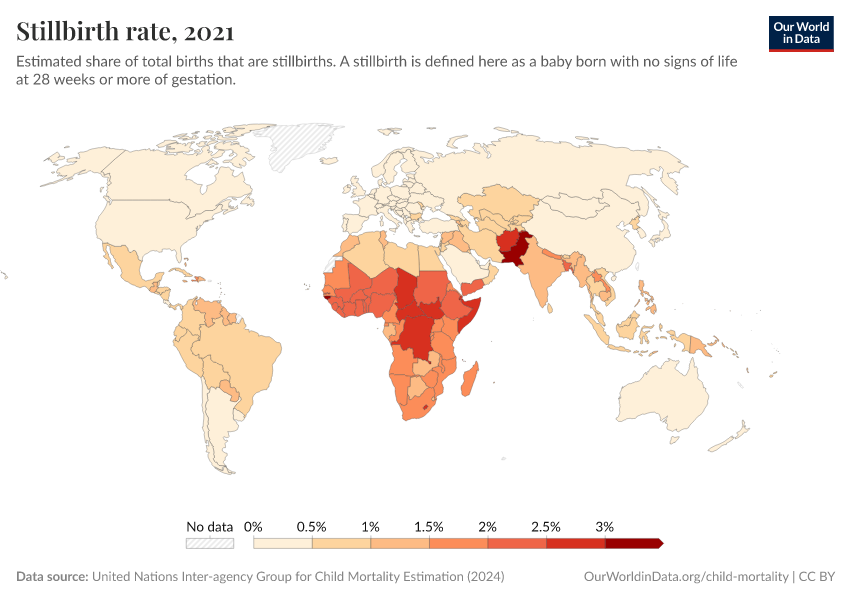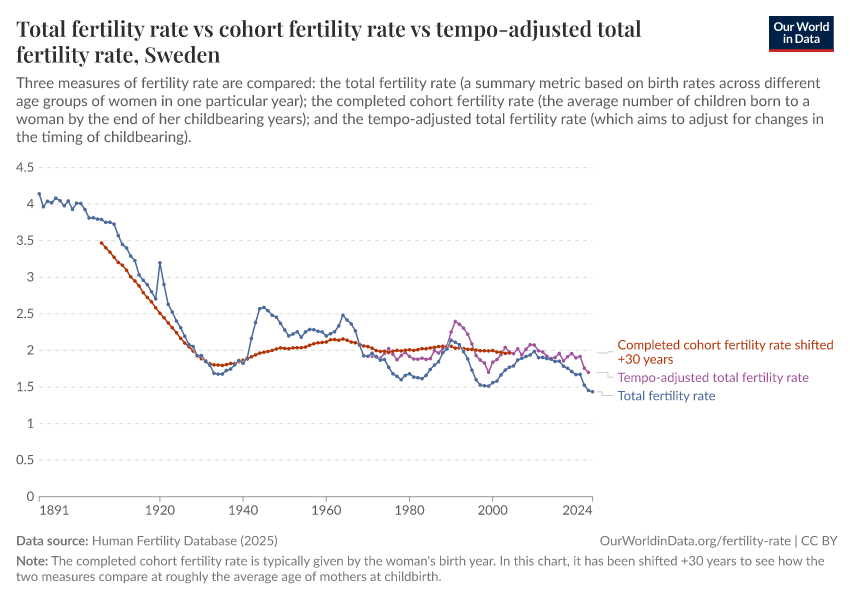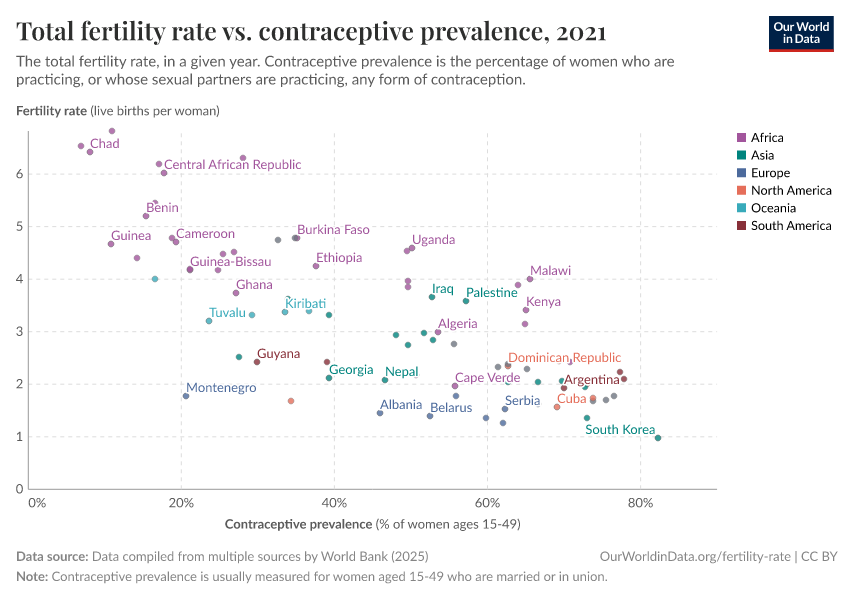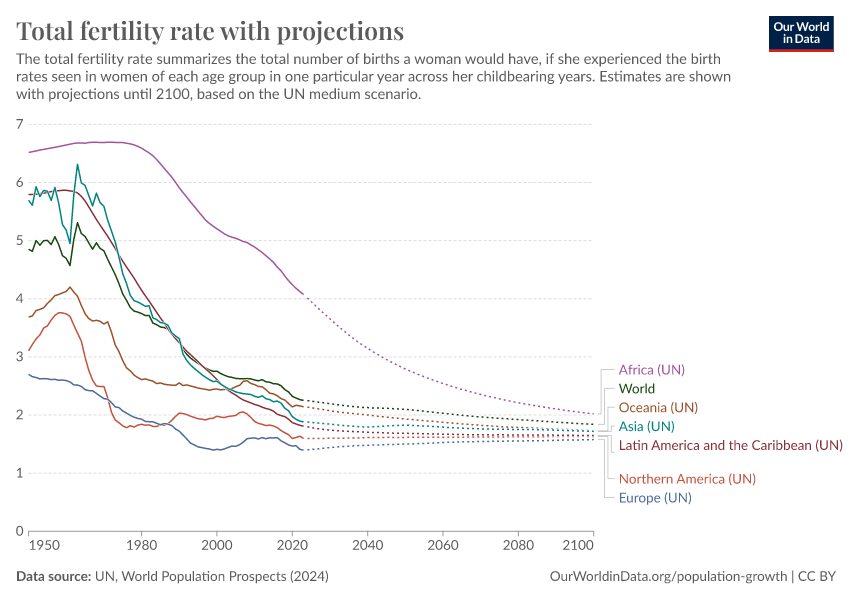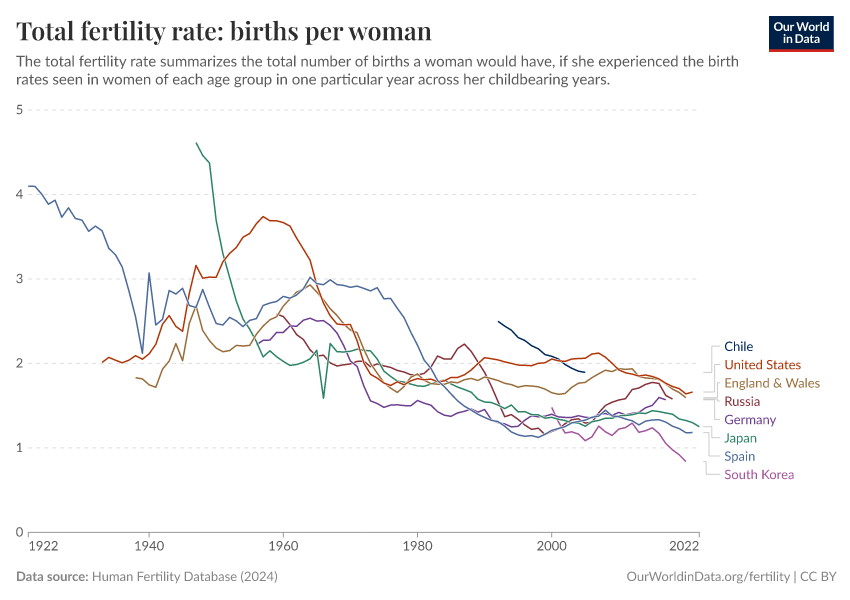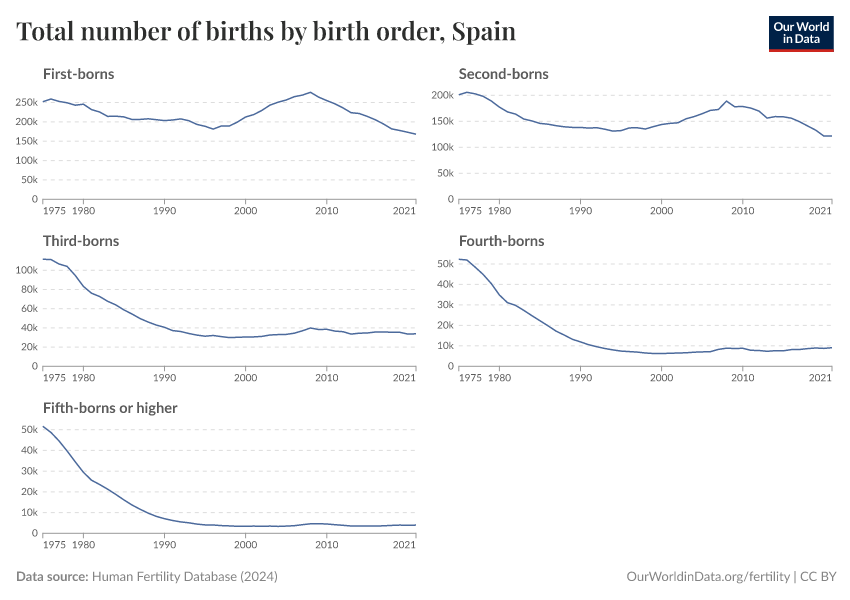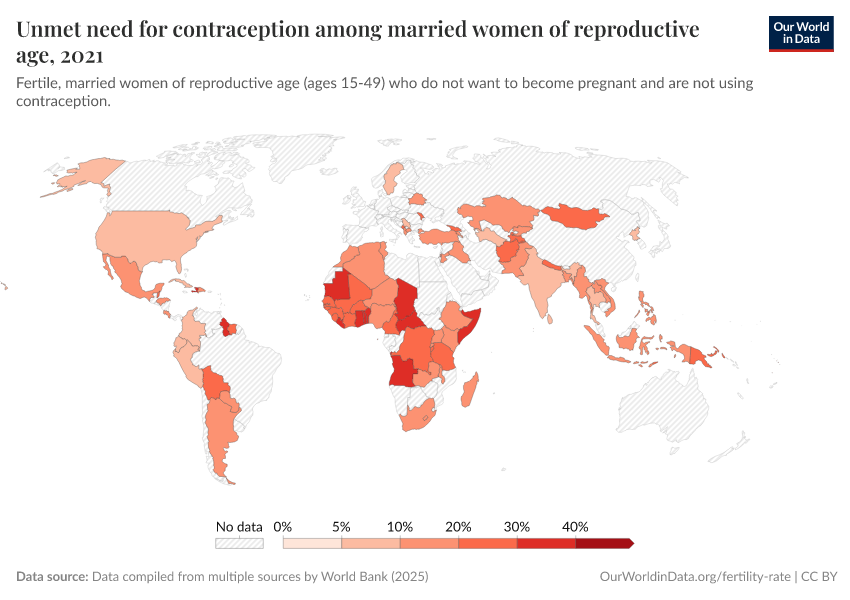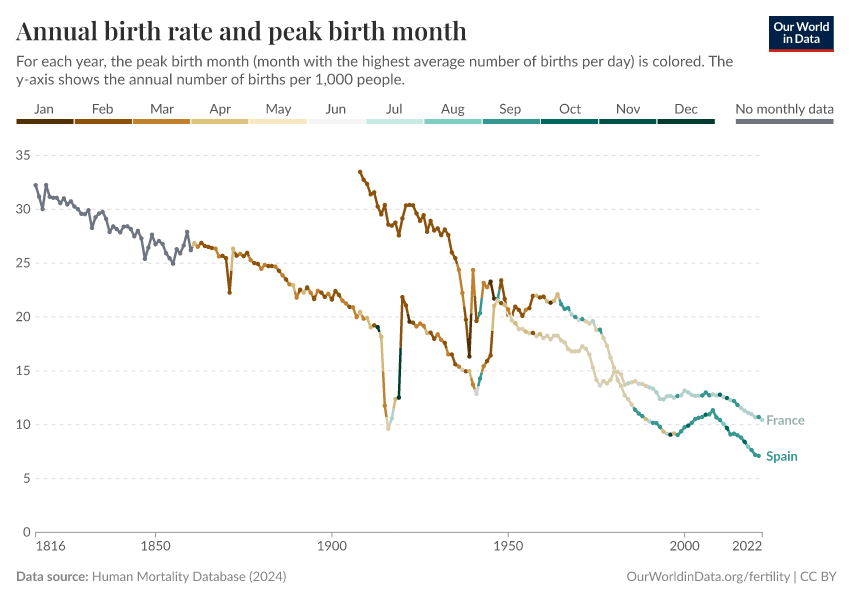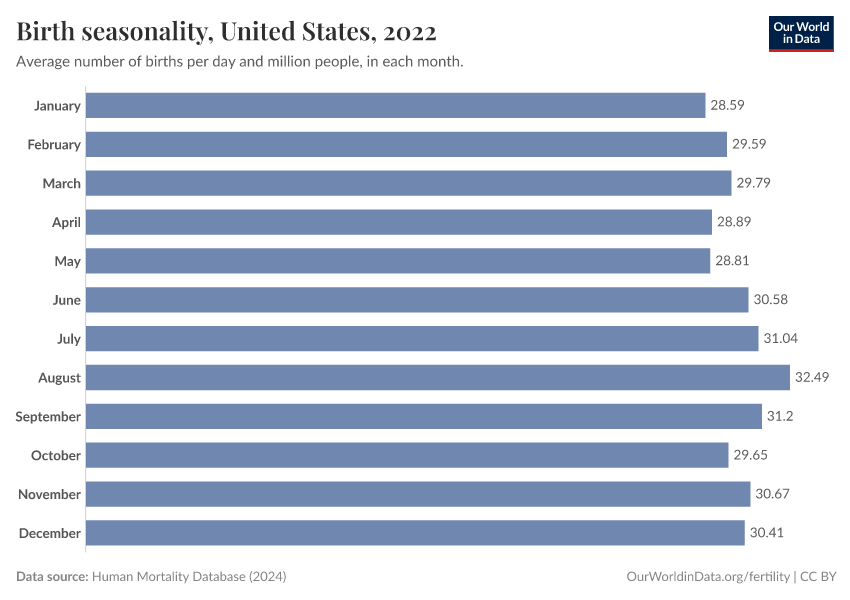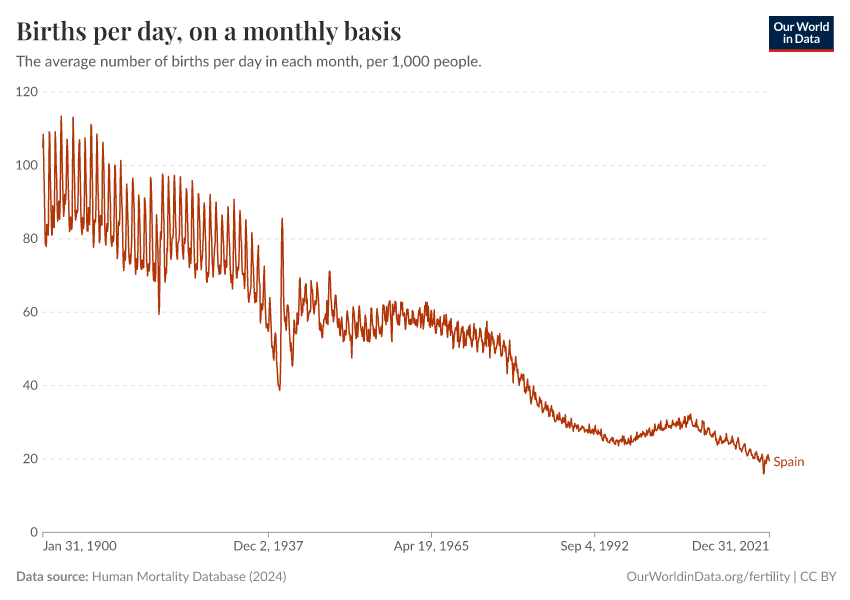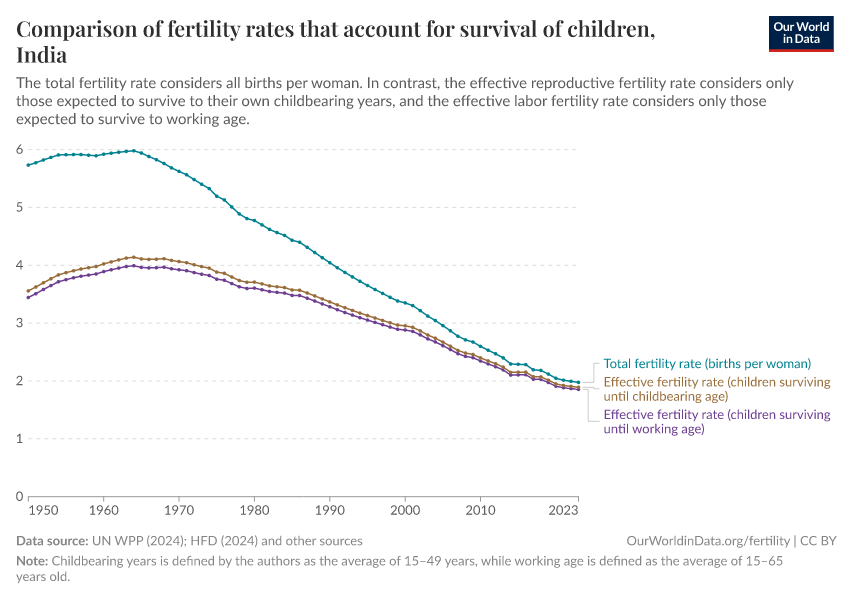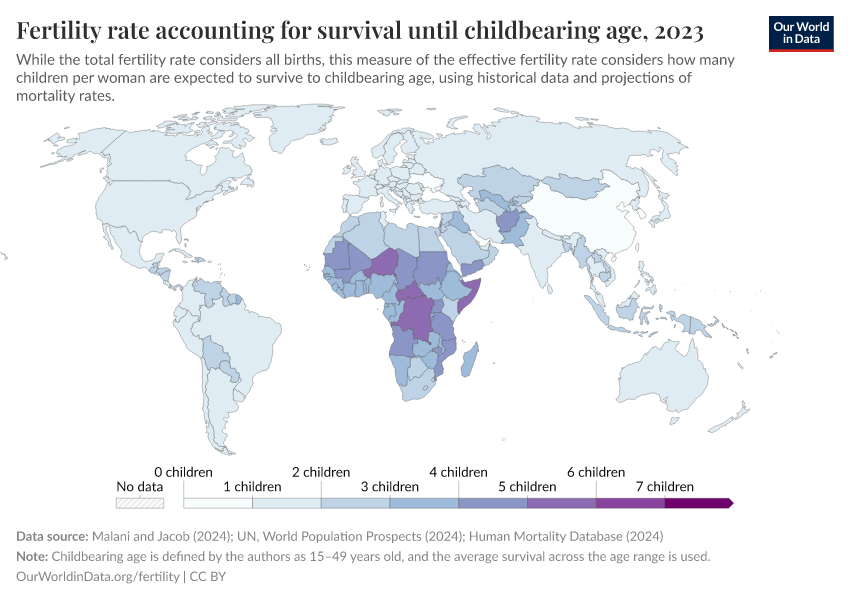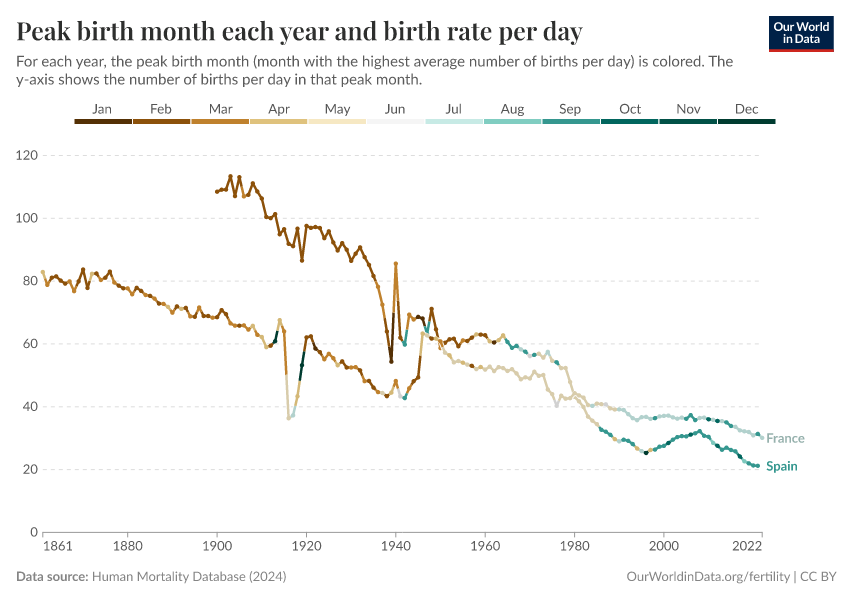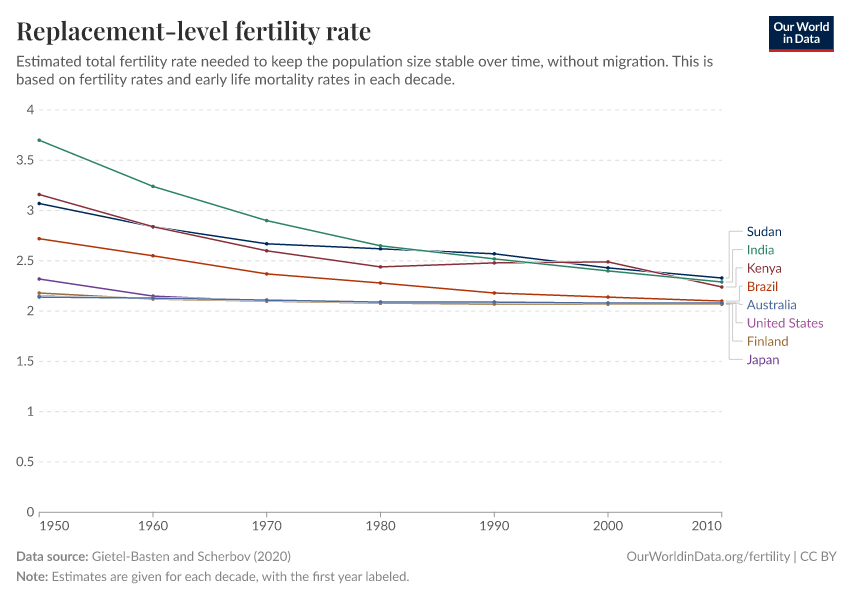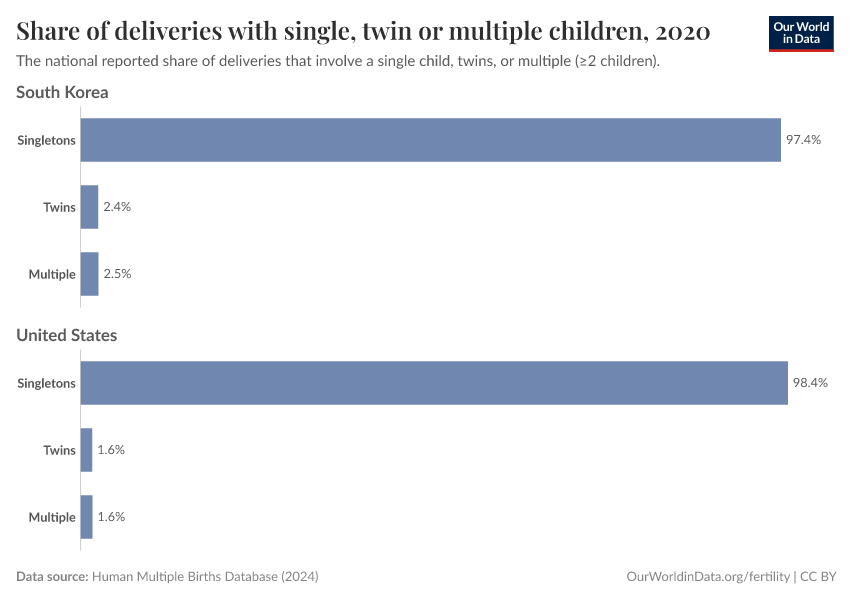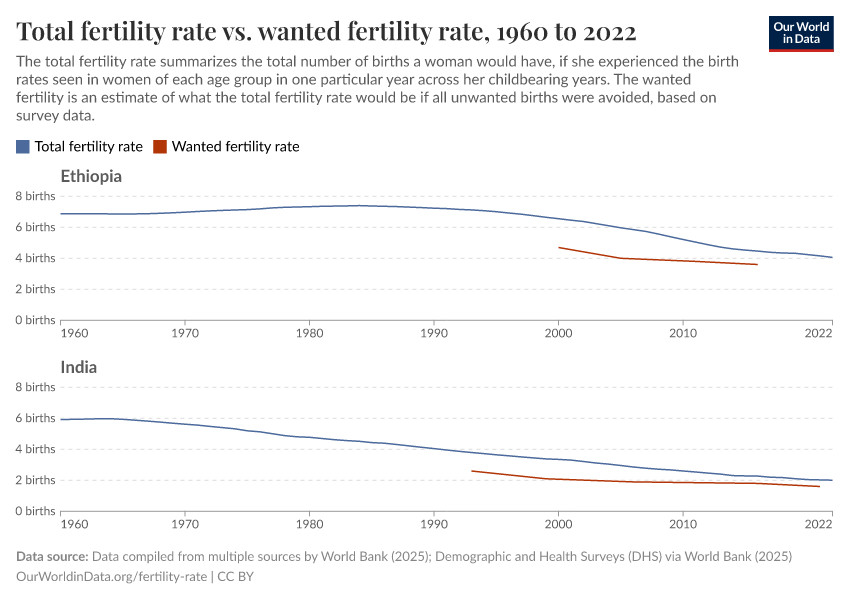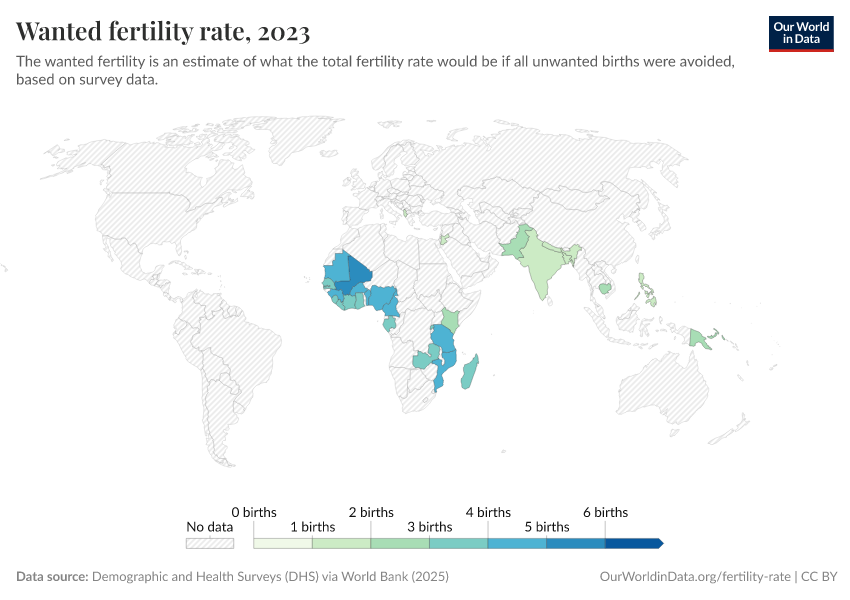Fertility Rate
How many children people have, and how this changes over time, are important drivers of population growth and the age structure of populations. People’s decisions about when and how many children to have, in turn, reflect broader trends in societies and economies.
Globally, the total fertility rate was 2.3 children per woman in 2023. This is much lower than in the past; in the 1950s, it was more than twice as high: 4.9.
The total fertility rate is the most commonly used metric to assess birth patterns: it captures the average number of births per woman, assuming she experiences the same age-specific fertility rates over her lifetime as the age-specific fertility rates in one particular year. It’s important to note that this does not predict how many children women will eventually have.
On this page, we present a wide range of different measures related to fertility. We cover parental ages at birth, teenage birth rates, twin birth rates, the use of reproductive technologies, and more.
By looking at these additional metrics, we can better understand when, why, and how parents have children — and what this means for individuals and societies. The following section highlights the key insights on this topic. Below are links to our in-depth articles, which explore several topics in more detail.
Research & Writing
February 20, 2014
The global decline of the fertility rate
The total fertility rate has halved in sixty years — what are the causes of the decline?
February 24, 2025
The baby boom in seven charts
The baby boom reshaped family life and drove population growth in many countries. In this article, we explore the key patterns in seven charts.
More Articles on Fertility
June 02, 2023
Population momentum: if the number of children per woman is falling, why is the population still increasing?
September 03, 2019
Until the late 1960s, the total fertility rate was five — since then, it has halved
February 24, 2025
Why the total fertility rate doesn’t necessarily tell us the number of births women eventually have
November 27, 2023
Period versus cohort measures: what’s the difference?
Key Charts on Fertility Rate
See all charts on this topicEndnotes
Leftwich, H. K., & Alves, M. V. O. (2017). Adolescent Pregnancy. Pediatric Clinics of North America, 64(2), 381–388. https://doi.org/10.1016/j.pcl.2016.11.007
Cite this work
Our articles and data visualizations rely on work from many different people and organizations. When citing this topic page, please also cite the underlying data sources. This topic page can be cited as:
Saloni Dattani, Lucas Rodés-Guirao, and Max Roser (2025) - “Fertility Rate” Published online at OurWorldinData.org. Retrieved from: 'https://ourworldindata.org/fertility-rate' [Online Resource]BibTeX citation
@article{owid-fertility-rate,
author = {Saloni Dattani and Lucas Rodés-Guirao and Max Roser},
title = {Fertility Rate},
journal = {Our World in Data},
year = {2025},
note = {https://ourworldindata.org/fertility-rate}
}Reuse this work freely
All visualizations, data, and code produced by Our World in Data are completely open access under the Creative Commons BY license. You have the permission to use, distribute, and reproduce these in any medium, provided the source and authors are credited.
The data produced by third parties and made available by Our World in Data is subject to the license terms from the original third-party authors. We will always indicate the original source of the data in our documentation, so you should always check the license of any such third-party data before use and redistribution.
All of our charts can be embedded in any site.



